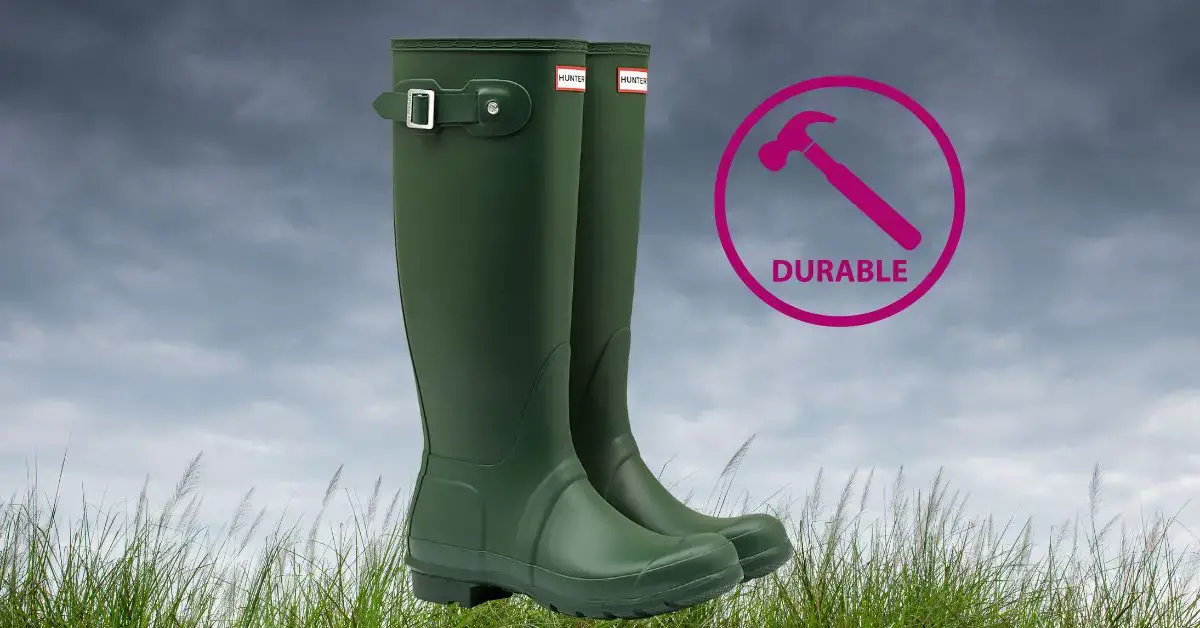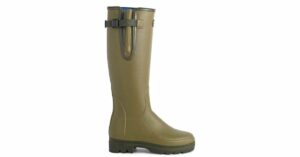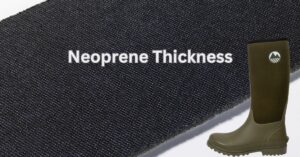Best Materials For Durable Rain Boots
When it comes to choosing a pair of rain boots, durability is a key factor to consider. Rain boots are designed to withstand wet and muddy conditions, providing protection and comfort for your feet. To ensure longevity, it’s essential to choose rain boots made from high-quality materials. Here are some of the best materials known for their durability in rain boots:
1. Natural Rubber
One of the most popular materials for rain boots is natural rubber. It offers excellent waterproofing properties, making it ideal for rainy and muddy conditions. Natural rubber is highly flexible and resistant to cracking, ensuring that your rain boots stay intact for an extended period. Additionally, it provides good traction, helping you maintain stability on slippery surfaces. Rain boots made from natural rubber are known for their durability and can withstand regular use in various weather conditions.
2. Neoprene
Neoprene is another material commonly used in rain boots, especially in cold and wet environments. It is a synthetic rubber that offers exceptional insulation and water resistance. Neoprene rain boots provide excellent thermal protection, keeping your feet warm and dry even in freezing temperatures. Moreover, neoprene is highly resistant to abrasion, punctures, and chemicals, making it a durable option for rugged outdoor activities.
3. PVC (Polyvinyl Chloride)
PVC is a synthetic material that is often used in rain boots due to its waterproof properties. Rain boots made from PVC are lightweight, flexible, and resistant to chemicals and abrasion. PVC boots are easy to clean and maintain, making them a practical choice for everyday use. While PVC may not be as durable as natural rubber or neoprene, it still offers a good level of durability at an affordable price point.
4. Vulcanized Rubber
Vulcanized rubber is a process that involves treating natural rubber with heat and sulfur, resulting in a stronger and more durable material. Rain boots made from vulcanized rubber are highly resistant to wear and tear, making them suitable for heavy-duty use. They provide excellent waterproofing and are less likely to crack or split, ensuring long-lasting performance even in challenging conditions.
5. Leather
While not as common as the other materials mentioned, leather rain boots can be an excellent choice for durability. Leather is a natural material that offers excellent water resistance and breathability. High-quality leather boots are known for their longevity and ability to withstand rough weather conditions. However, it’s important to note that leather rain boots require regular maintenance and conditioning to ensure their durability over time.
5 Popular Rain Boots That Are Made To Last
Last update on 2025-11-12 / Affiliate links / Images from Amazon Product Advertising API
Frequently Asked Questions (FAQs)
Q: How should I care for my rain boots to maintain their durability?
A: To maintain the durability of your rain boots, it’s important to follow proper care and maintenance instructions. After each use, rinse off any dirt or mud and wipe them dry with a clean cloth. Avoid exposing your rain boots to direct sunlight or extreme heat, as it can cause the materials to deteriorate. Additionally, storing them in a cool and dry place will help prevent mold or mildew growth. Regularly apply a silicone or rubber conditioner to keep the boots supple and prevent cracking.
Q: Are there any specific features to look for in rain boots for maximum durability?
A: Yes, several features can contribute to the overall durability of rain boots. Look for reinforced toe caps and heel areas, as these are common areas of wear and tear. Double stitching and glued seams also provide extra strength and prevent water from seeping into the boots. Additionally, a slip-resistant outsole made from durable rubber will enhance traction and reduce the chances of slipping on wet surfaces.
Q: Can I use rain boots made from these durable materials for activities other than rainy days?
A: Yes, rain boots made from durable materials like natural rubber, neoprene, and vulcanized rubber are versatile and suitable for various outdoor activities. They can be used for gardening, hiking, fishing, or any activity that requires waterproof and durable footwear. However, it’s essential to consider the specific features and design of the boots to ensure they meet the requirements of the activity you intend to engage in.
In conclusion, choosing rain boots made from durable materials is crucial to ensure long-lasting performance and protection from wet and muddy conditions. Natural rubber, neoprene, PVC, vulcanized rubber, and leather are among the best materials known for their durability in rain boots. By selecting high-quality rain boots and following proper care and maintenance practices, you can enjoy reliable protection and comfort for years to come.










